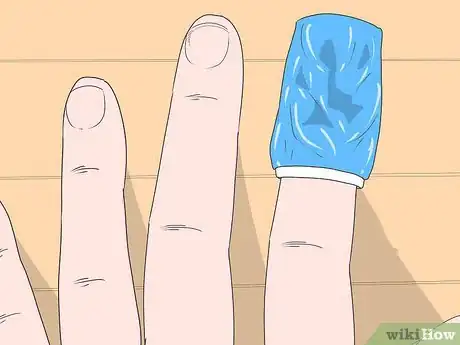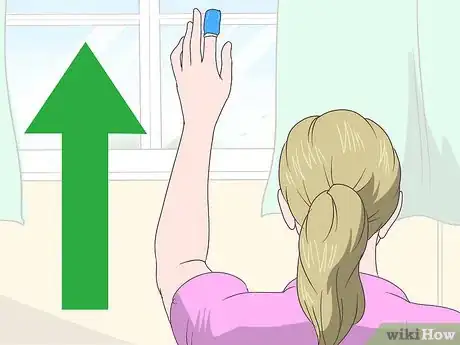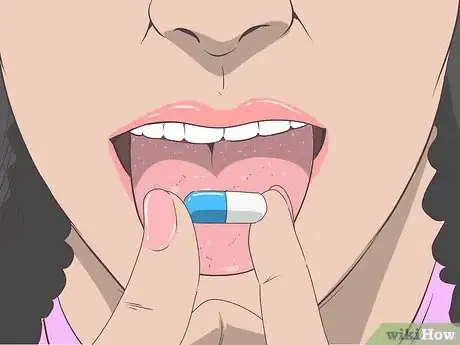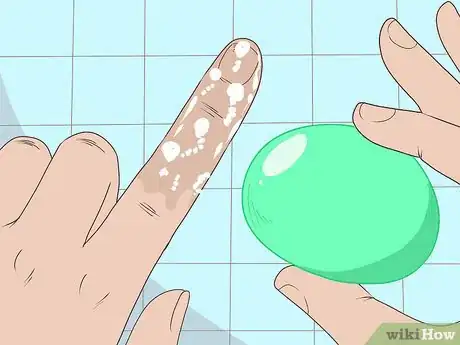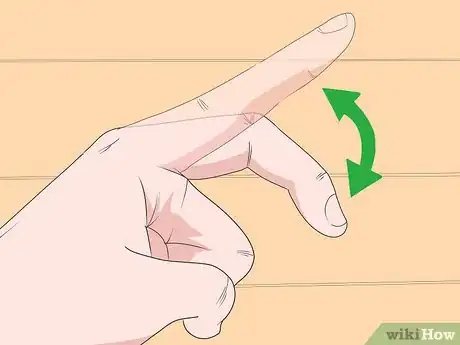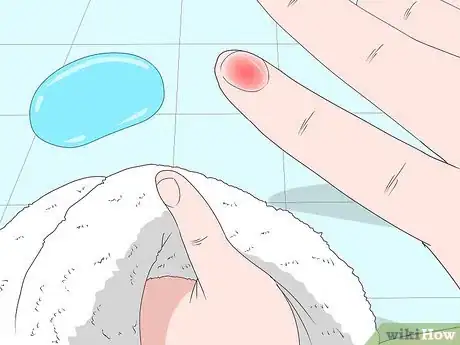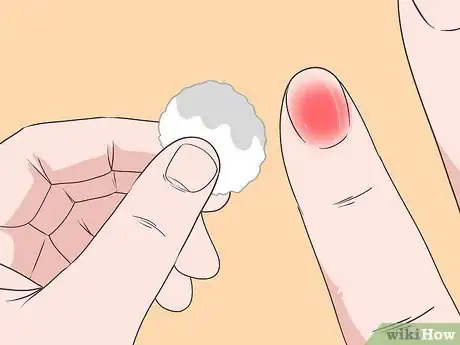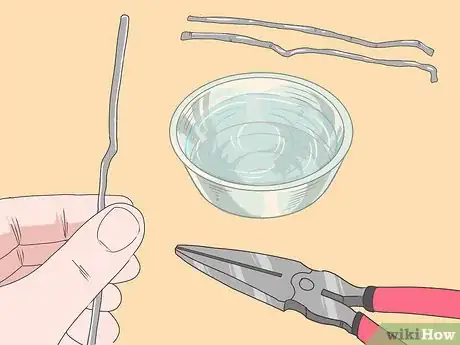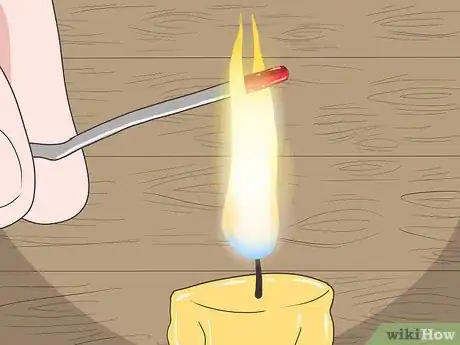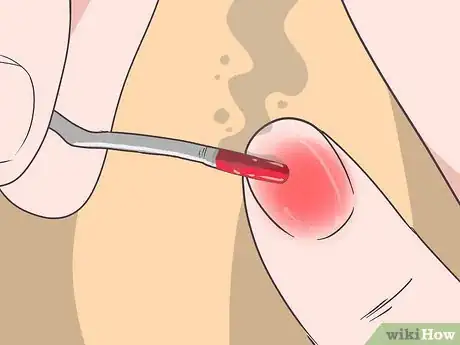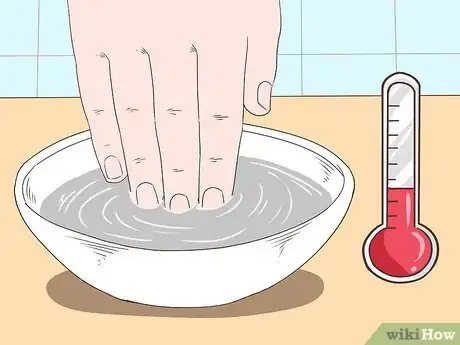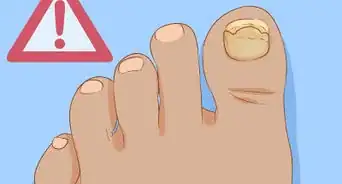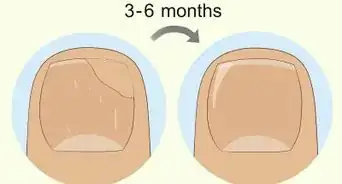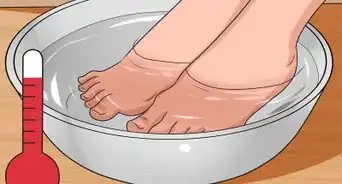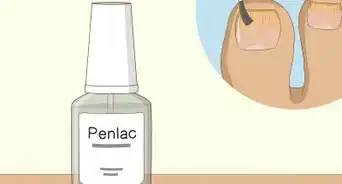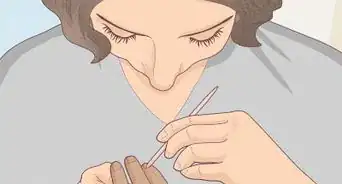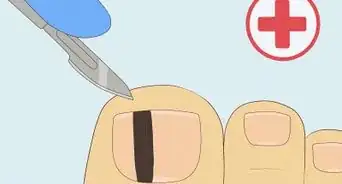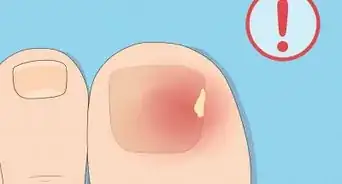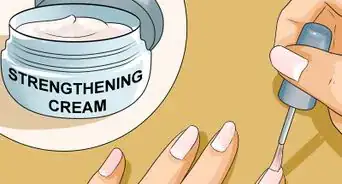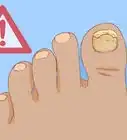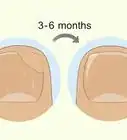This article was co-authored by David Nazarian, MD. Dr. David Nazarian is a board certified Internal Medicine Physician and the Owner of My Concierge MD, a medical practice in Beverly Hills California, specializing in concierge medicine, executive health and integrative medicine. Dr. Nazarian specializes in comprehensive physical examinations, IV Vitamin therapies, hormone replacement therapy, weight loss, platelet rich plasma therapies. He has over 16 years of medical training and facilitation and is a Diplomate of the American Board of Internal Medicine. He completed his B.S. in Psychology and Biology from the University of California, Los Angeles, his M.D. from the Sackler School of Medicine, and a residency at Huntington Memorial Hospital, an affiliate of the University of Southern California.
There are 7 references cited in this article, which can be found at the bottom of the page.
This article has been viewed 89,660 times.
Whether you crush your finger with a hammer or a slammed car door, a smashed fingernail can be a very painful experience. Fortunately, if not too severe, there are some steps you can take to relieve the pain without having to rush to the emergency room. Immediately after the injury, you’ll want to take some precautions to reduce swelling and redness. A day or two after the injury, you can use a heated paperclip to drain blood from under the nail to further relieve pain and pressure.[1]
Steps
Relieving the Pain Immediately after Injury
-
1Ice your finger. Wrap an ice pack or cold compress in a paper towel and place it on the injured finger. Keep the ice on it for 10-minute intervals with 20-minute breaks for the first few hours after you smash your finger. Ice helps to minimize swelling, bleeding, and pain.
- Be careful not to apply to much weight or pressure with the ice. You may just place your finger on top of the wrapped ice pack or compress.
- Do not put ice directly on skin or keep the ice on for longer than 15-minute intervals. This may cause frostbite or further inflammation.[2]
-
2Elevate your hand above your heart. Hold your injured finger up in an elevated position above the level of your heart. Do this continuously to limit pressure.
- If you keep your hand down at your side, blood will rush to the injury, increasing the swelling and uncomfortable throbbing pain.[3]
Advertisement -
3Take an over-the-counter painkiller if the pain is severe. To further relieve pain and reduce inflammation, take an oral anti-inflammatory or pain killer such as ibuprofen (Advil), Tylenol, Motrin, or Aspirin.[4]
-
4Clean the wound with mild soap and water. If the injury resulted in an open wound, clean it as soon as possible. You can clean the wound by rinsing with running tap water and washing around the wound with soap.
- If there is any dirt or debris in the wound, remove it with tweezers cleaned with alcohol. [5]
-
5Apply an antibiotic ointment on the wound. Apply a thin layer of an antibiotic ointment such as Polysporin to the open cut. This will keep the surface of the cut moist and help prevent scarring.
- You can also use petroleum jelly on the wound if you don't have ointment.[6]
-
6Keep your finger moving to prevent stiffness. If you’re able to do so, gently keep your finger moving as much as possible without causing further pain. This will help reduce inflammation and prevent stiffness.
- If you can’t move your finger or feel it after a few minutes have passed, you may need to seek medical attention.[7]
Draining Blood from under the Nail Using a Paperclip
-
1Wash your injured finger thoroughly. A few days after the injury, you may notice some blood under the nail that looks like a dark-colored discoloration (red, maroon, or purple-black). You’ll want to release that blood that forms under the nail to further relieve pain and pressure. Make sure to wash your hands with mild soap and warm water, then dry them with a clean towel.
- This will prevent an infection from developing on your fingertip.[8]
-
2Disinfect the injured finger with rubbing alcohol. In addition to washing your finger, you’ll want to use rubbing alcohol to further clean and disinfect the injury.
- Apply alcohol by pouring a small amount on a cotton ball to clean the surface of the fingernail and then let it dry. [9]
-
3Straighten and sterilize the paperclip. Use a set of pliers to straighten the paperclip completely. Then, dip one end of the paperclip in rubbing alcohol to disinfect it.
- When you’re finished, place the disinfected paperclip on a clean paper towel and let it dry.
-
4Heat the paperclip with a match or lighter. Holding the paperclip with pliers, use a flame to heat the end that you disinfected. Do this until the end of the paperclip is red hot.
- This will ensure that the paperclip is hot enough to go through the nail and release the blood.[10]
-
5Touch the heated paperclip to your injured nail. Carefully press the red hot end of the paperclip on the part of the fingernail where most of the blood has collected. Keep it there until the paperclip has burned through the nail.[11]
- Be careful not to press the paperclip too hard. You want to pierce the nail with the paperclip without burning the skin underneath.
- If done successfully, you will see drainage of clear or slightly bloody fluid for 2 to 3 days. This is normal.[12]
-
6Soak the finger in warm water daily. After this method is completed, soak the injured finger in warm, soapy water for 10 minutes, 3 times a day for 2-3 days. This will ensure that the injury remains clean and infection is prevented.
- Most smashed fingernails tend to feel better within 3 to 4 days.
- More severe injuries may take weeks to heal.[13]
Warnings
- You should seek help from a nurse or doctor if you can't straighten your finger, it feels numb, is noticeably bent or crooked, symptoms get worse after 48 hours of home care, or the injury stays swollen for more than 48 hours.[15]⧼thumbs_response⧽
Expert Interview

Thanks for reading our article! If you'd like to learn more about health treatment in the working place, check out our in-depth interview with David Nazarian, MD.
References
- ↑ https://www.webmd.com/skin-problems-and-treatments/bleeding-under-nail
- ↑ https://www.healthline.com/health/smashed-finger#immediate-relief
- ↑ https://www.healthline.com/health/smashed-finger#immediate-relief
- ↑ https://www.healthline.com/health/smashed-finger#immediate-relief
- ↑ https://www.medicalnewstoday.com/articles/321396.php
- ↑ https://www.mayoclinic.org/first-aid/first-aid-cuts/basics/art-20056711
- ↑ https://www.verywellhealth.com/how-to-treat-a-smashed-finger-1298320
- ↑ https://www.verywellhealth.com/how-to-treat-a-smashed-finger-1298320
- ↑ https://www.verywellhealth.com/how-to-treat-a-smashed-finger-1298320
- ↑ https://www.verywellhealth.com/how-to-treat-a-smashed-finger-1298320
- ↑ https://www.verywellhealth.com/how-to-treat-a-smashed-finger-1298320
- ↑ https://www.healthlinkbc.ca/health-topics/zm6154
- ↑ https://www.healthlinkbc.ca/health-topics/zm6154
- ↑ https://www.verywellhealth.com/how-to-treat-a-smashed-finger-1298320
- ↑ https://www.healthline.com/health/smashed-finger#seek-help
